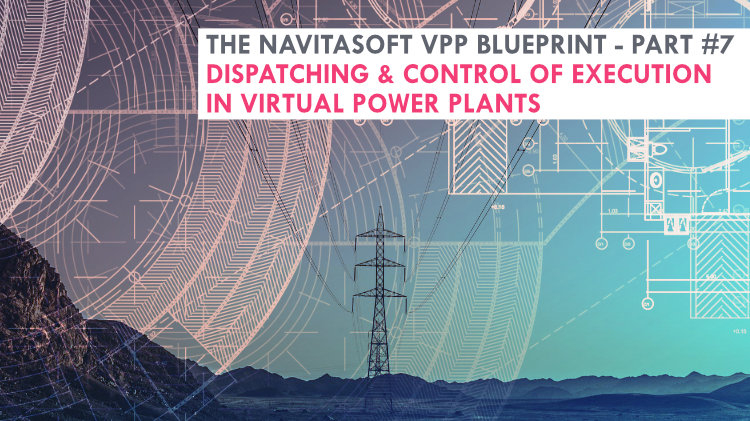
Imagine having the power to harness the collective energy of countless homes and businesses scattered across your entire region. No, this is not 2050 calling, but the promise of virtual power plants (VPPs) - an innovative technology that aggregates distributed (primarily renewable) energy resources to provide reliable, affordable, and clean power to the grid already today in 2024.
But then again, with more distributed solar and wind comes more unpredictable generation patterns, and therefore a need for more ancillary services to balance supply and demand. This is especially important as many conventional power plants with spinning turbines are retiring. Without their inertia, from now on, we will have to manage the stabilization of grid frequency with other sources. This is where VPPs come in. Today, we will talk about how VPPs not only help distribute decentralized power more efficiently but can also provide grid-critical services by efficiently deploying their available capacity to the grid through various markets.
Our power grids are currently facing the huge challenge of handling more unpredictable production patterns. This will only become more difficult in the years to come, as power demand in Europe is forecasted to increase by 40 percent until 2050, from 3,500 TWh in 2020 to 4,900 TWh due to widespread electrification of heating and EVs.
Here, VPPs can provide the much-needed remedy - by offering ancillary services from thousands of aggregated distributed energy resources (DERs) like batteries, rooftop solar, and demand response. While they are currently unable to react fast enough to provide FCR services, VPPs excel at the slower frequency restoration reserves (aFRR and mFRR) services by remotely coordinating portfolios of DERs based on signals from grid operators. When a transmission system operator (TSO) or distribution system operator (DSO) needs flexible capacity in a minute-to-hour timeframe, they can simply call upon a VPP's aggregated capabilities.
Yet, realizing the full potential of VPPs, whether for providing basic power or ancillary services, hinges on coordination and control mechanisms that can direct this dispersed fleet of resources as a single, cohesive unit. In the same way that a traditional power plant requires precise monitoring and dispatch of its generators, VPPs demand an orchestrated dance of scheduling and execution tracking , but across a vastly more complex web of participants.
It’s quite a paradox, but decentralization - harnessing the power of countless smaller distributed resources - actually requires an ever-higher degree of centralized oversight and intelligent automation. From nominating delivery capacities to grid operators to disaggregating dispatch signals across diverse asset portfolios to monitoring performance and compensating for non-responsive devices, VPPs naturally face unique logistical obstacles.
Scheduling
At first glance, the scheduling processes for virtual power plants may seem functionally identical to those of conventional power generators. In both cases, these activities involve informing the grid operator of the anticipated output levels and associated prices for specific periods. However, beneath this surface-level similarity lies a layer of complexity unique to VPPs.
Unlike their monolithic, centralized counterparts, virtual power plants merge numerous small-scale, geographically dispersed resources. This inherent heterogeneity requires complex optimization to determine the ideal mix of assets to deploy to reliably and cost-effectively meet the nominated capacities. Should the VPP lean more heavily on residential solar plus storage systems during certain hours? Or would tapping into a cluster of commercial building batteries and EV chargers yield a better outcome?
The optimization puzzle grows even more layered when third-party asset ownership is considered. Many VPPs incorporate resources owned by individual households or businesses that receive a portion of the earnings, which can inject an additional set of contractual and economic variables into the scheduling equation.
Moreover, once the optimal asset portfolio is selected, the nominated quantities must be disaggregated and translated into specific dispatch instructions tailored to each resource's characteristics and capabilities. Ensuring this choreography unfolds as planned is vital to upholding the VPP's commitment to the grid operator.
Dispatching diversified assets
Once scheduled, the VPP's control center must dispatch specific assets by sending real-time operating signals. While the control room for a traditional power plant has dedicated engineers monitoring and issuing commands to on-site generators, dispatching presents novel cyber-physical challenges for a VPP's potentially thousands of offsite, heterogeneous assets.
The control platforms must integrate each asset type's characteristics, operational constraints, and communication protocols. Asset connectivity is critical, so VPP operators utilize redundant, low-latency communication networks capable of handling massive data flows from device telemetry. Additionally, some grid services like frequency regulation require autonomous, decentralized control where assets automatically detect and respond to grid frequency deviations without remote signals. This works fine for conventional power plants, but smaller devices must be set up for it. Sophisticated control architectures to enable frequency regulation for VPPs are an emerging area of innovation.
After assets are dispatched, trade capture and settlement processes kick in to verify credit performance. Whereas a power plant has precise metering at the point of grid interconnection, a VPP's performance is the aggregated response across a fragmented asset fleet.
If an asset does not obey a signal, the VPP needs to quickly choose and activate a different asset to meet its obligations to the network operator. And how does it prove to the TSO that devices under its control were responsible for correcting frequency? A big power plant is set up for this, but a bunch of small household devices are not.
The VPP market
Let’s turn to the market side of things, where regulatory reforms open up new revenue opportunities that allow VPPs to unlock their potential. FERC Orders 2222/2839 in the U.S. mandate that distributed energy resources like VPPs can participate in wholesale electricity markets by providing energy, capacity, and ancillary services.
Similarly, many utilities and distribution system operators are restructuring programs for DERs to provide "non-wires alternatives" to traditional investment in grid infrastructure. Under these opportunities, VPPs can earn revenue streams by deferring or avoiding the need for new transmission lines, substations, and other capital expenditures.
VPP operators can capitalize on their portfolios' flexibility across a broader range of grid services as these market developments take hold. This expands potential revenue streams, enhancing the economics for asset owners to participate and driving further VPP deployment. The number of distributed energy resources is only expected to grow exponentially, so mastering these technical steps will prove crucial for VPPs to unlock their full potential as a force for the energy transition.
VPPs for grid services
The VPP operator's core task is to optimally dispatch their diversified fleet of assets to deliver the required energy or reserves collectively. This innate flexibility from aggregating many small, affordable DERs provides a cost-effective alternative to building traditional power plants just for ancillary services.
With millions of DERs coming online behind-the-meter, VPPs give grid operators a means to coordinate and monetize that latent resource potential. Instead of dealing with thousands of individual assets, a single VPP can serve as the orchestrator - fueling a smarter, more distributed grid where supply and demand are exquisitely balanced in real-time.
Though operationally more complex than trading bulk energy, VPPs' flexibility is becoming indispensable as power systems decentralize and decarbonize. Smart scheduling algorithms, aggregated real-time telemetry, and sophisticated portfolio optimization enable VPPs to reliably execute their committed ancillary services.
Collaboration drives VPP innovation
Overcoming VPPs' technical, operational, and market challenges requires collaboration across the energy industry. The Virtual Power Plant Partnership (VP3) launched by RMI convenes diverse stakeholders to catalyze policies, regulations, and market rules conducive to VPP growth. The business association smartEn, of which we are a member, supports the development of demand-side flexibility - and VPPs are a critical enabling technology.
Initiatives like VP3 and smartEN are vital to promote VPP technology as providers, utilities, grid operators, asset owners, and other parties come together to share best practices and learn from each other. This collaboration surfaces innovations in VPP design, control architectures, and business models to develop the technologies needed for VPPs to meet grid needs reliably and address the barriers currently preventing VPPs from being widely deployed and compensated for their value.
VPPs can significantly support the transformation of our electricity system by helping to keep the grid balanced and free from congestion. With continued progress, the flexibility of distributed energy resources can provide not only dependable reserves but also revenue. This is how VPPs will unlock the combined potential of distributed energy resources, enhancing grid flexibility, affordability, resilience, and sustainability.
The Navitasoft VPP Blueprint
Follow our complete series on VPPs and the digital solutions needed to run them:
Part 1: Forecasting in virtual power plants
Part 2: Integrating virtual power plants
Part 3: Internal system integration and reporting
Part 4: Optimization in Virtual Power Plants
Part 5: Trading Strategies to Optimize Your VPP
Part 6: How to Manage Risk for Your Virtual Power Plant
Part 7: Dispatching & control of execution in virtual power plants
Part 8: Disaggregation and settlement in virtual power plants
Part 9: VPP 3.0 - The Third Generation of Virtual Power Plants




